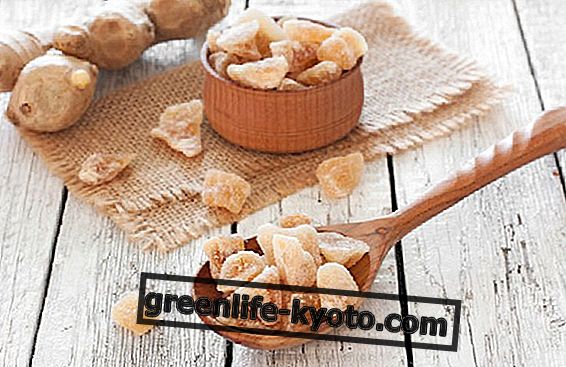Walnuts are oily seeds rich in vitamin E, useful against cholesterol, stress and arteriosclerosis. What are the properties and benefits? How many calories do nuts contain and what are the contraindications?
Walnuts are oily seeds rich in mineral salts, perfect for those who practice sports. Very useful as a source of zinc, calcium and magnesium, they are also excellent allies in the treatment of arteriosclerosis and stress. Let's find out better.

The main nutrients of nuts
Walnuts are very energetic fruits, for 100 grams of product they provide the body with about 600 calories.
Like all oil seeds, they are rich in polyunsaturated fatty acids and mineral salts, such as zinc, calcium, potassium, copper and iron .
In particular, they are rich in magnesium and are therefore among the natural food supplements of this mineral. In addition, the contribution of vitamin E and folic acid is substantial in walnuts.
Property
The omega 3 acids contained in nuts help to keep the level of "bad" cholesterol in the blood under control, to prevent arteriosclerosis and, it would seem, also to fight stress.
Vitamin E makes walnuts small pearls of youth that, by fighting the action of free radicals, are excellent antioxidants .
However, the most characteristic property of walnuts is that given by arginine, an amino acid that makes them perfect for those who practice sports : in fact walnuts are a very energetic food (therefore excellent for recharging in a healthy and light manner) and dilating blood vessels, bringing more oxygen and nutrients to the muscles, improve physical performance .
According to Paracelsus's theory of signatures, walnuts are good for the brain . This property would be underlined by the appearance of the kernel of the walnut which evokes the structure of the cerebral cortex: this correspondence would define, according to the theory of signatures, a natural link between these two elements.
In the popular imagination, walnut has always been a tree tied to witches and evil spirits .
During the Middle Ages it was believed that the Sabbaths (the nocturnal encounters between witches and the Demon) took place just under a walnut tree, for this reason this plant has remained inextricably linked in time to the superstitions and fantastic stories: in many fairy tales, to the inside of walnuts, wonderful treasures are hidden and once, in Sicily, it was believed that a nut in the pocket preserved from spells and fever.
There are numerous types of nuts, discover the most common varieties in Italy

Walnuts in the kitchen
The nuts available on the market can be of different qualities, among the most widespread are Sorrento and California.
Choosing the freshest and untreated nuts can be easy thanks to some suggestions:
- Those without lesions on the shell and with the petiole and the leaves still attached are to be preferred.
- Quality clues are the black spots that some nuts bear on the shell. These are blotches of mallo juice and indicate that the nuts were not chemically bleached.
Walnuts are widely used in the kitchen : for desserts, sauces and bakery products they are widely used and among the most popular combinations there is certainly the one with gorgonzola.
An excellent liqueur is also prepared with walnuts: the nocino precisely.
Behind this preparation there is tradition and folklore, but also a touch of magic ...
Legend has it that walnuts for the nocino are harvested at night still drenched in dew, during the summer solstice and more precisely on June 24, St. John's Day.
This date was considered a special passage of the Earth that gave the fruits esoteric properties and it was expected just this night to gather herbs and plants intended for magical operations . Nocino, a drink rich in precious nutrients, was prepared as a reserve of energy to be kept for moments of need: almost a magic potion we could say!
By Stefania Puma













